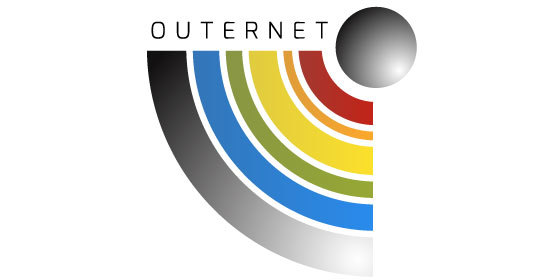The project “Outernet” decided how they would not censor the information

The creators of "Outernet" are quite aggressive PR-campaign and, at times, make very loud statements about their goals. No less aggressively, they edit the content on the official website, when current actions start to go against past statements. At the very beginning, they strongly stressed that Outernet would be available on any device with Wi-Fi. A little later, they stopped pushing it and made Lantern - alas, without the “lantern” (or a set of satellite dish and a heap of additional equipment) Outernet could not be “caught”. At that moment, I noticed that a great emphasis had begun on the fact that there was no censorship in Outernet - this was repeated on the official website often. Now it does not repeat. One thing is alarming: right now they are pushing for the fact that Outernet will always be "free." If you think about it, the subscription fee for using Outernet is most likely waiting for everyone in the future (although, and I will mention it a little later, cautious talks about a possible premium content are already heard).
So, more about how things are being censored at the moment.
The developers of Outernet have published a draft of The Outernet Broadcast (version 1.0) on Google Docs. I was interested in the section “Outernet's Broadcast Standards and Goals” - goals and standards in broadcasting Outernet. And he says:
At the moment, Outernet does not come up with original content, but simply broadcast the already existing in electronic form. We are guided by the standards of journalism described in the Code of the International Federation of Journalists and agree with their message, even if this does not fully correspond to our situation.
')
Outernet content related goals:
- Education. Content should enable the user to become a more informed member of the public; The content should help the person to develop.
- True. Outernet - for the truth and for the right of people to the truth.
- Transparency. Content should enable the user to better understand how different organizations and structures affect their daily existence.
- Increase competence. Content should give the user the ability to control their destiny and achieve their goals.
- Health and safety. Content should contain information that contributes to a healthier, safer, and, in general, a wonderful life.
- The quality of life. Content should directly or indirectly help a person to improve his quality of life.
Here are some common examples of what content does not fit into these goals:
- Immediate and overt threats. Content that is created to intimidate or incite to violent acts.
- Pornography. Although Outernet and not against nude nature (materials related to health, art, etc.), the topic of sex, which does not serve educational purposes, is not intended to be part of the broadcast Outernet.
- Hate speech. Any content that oppresses a person or group of people because of their gender, ethnicity, religion, race, inferiority, or sexual orientation. In some countries, certain moments are permitted and protected by the state as a right to free speech, but this is not intended to be part of the Outernet broadcast.
- Misleading information. Such information, which is completely irrelevant to the facts, will not be broadcast.
Original textAt this time, it’s an online content creator. If you’re up to date, you’ll be immediately aware of their current activities.
Outernet Content Goals:
Internet objectives of the following objectives:
- Education. You must be aware of the fact that you’ve been willing to receive more information.
- Truth. Truth to the truth
- Transparency. It should be noted.
- Empowerment. The goal is to reach the target.
- Health and Safety. A healthier, safer, and ultimately more enjoyable life.
- Quality of Life. To improve their quality of life.
The goal is not included. These are meant for illustrative purposes only and are not outright bans on content.
- Imminent clear and present danger. Any action that is designed to incite a violent action and is likely to imminently incite that action.
- Pornography. It’s not a pro fi t that it is a priority for the Outernet broadcast.
- Hate speech. This is a group of people who are such as gender, ethnic origin, religion, race, disability, or sexual orientation. It is not a priority that Outernet's limited bandwidth should be allocated to.
- Intentionally Misleading Information. Information will not be broadcast.
In general, this means that information that
I mentioned a little bit earlier about “cautious talk about a possible" premium "content." In the introduction of "The Outernet Broadcast" item "3. No pay wall "describes that there is a lot of content on the Internet for which the user has to pay, and it is mentioned that" there is an option for those who want premium content on Outernet; It is described that you will need to pay in advance.
I will leave out of this article thinking about how commercialization affects the transparency and veracity of the broadcast information and will look forward to the next big update on the official Outernet site - I wonder what they will push on. Accessibility has already been pressed in, as well as the lack of censorship. I wonder what will happen after they stop pushing for free information.
Source: https://habr.com/ru/post/288296/
All Articles